Technical training in running for triathlon.
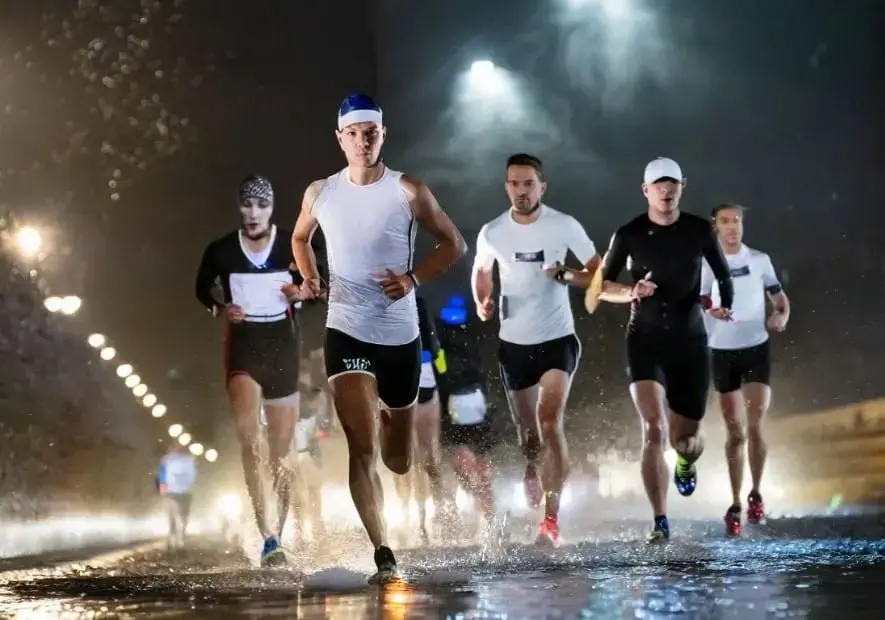
- 1. The Importance of Technical Training in Triathlon Running
- - Significance of efficient running form and technique
- - Role of technical running in preventing injuries
- 2. Understanding the Foundations of Running Technique
- 3. The Key Elements of Triathlon-Specific Run Training
- 4. Essential Running Drills for Triathlon Training
- 5. Incorporating Strength Training into Triathlon Run Preparation
- 6. The Role of Recovery in Technical Run Training
- - The significance of rest days in triathlon training
- - Active recovery techniques specific to running
- 7. Evaluating Progress and Adjusting Your Training Plan
- 8. Some Common Mistakes to Avoid While Training
- 9. Nutrition and Hydration Tactics for Triathlon Running
- 10. Final Words: Translating Training into Race Day Success
1. The Importance of Technical Training in Triathlon Running
Technical Training in Triathlon Running, although often overlooked, plays a pivotal role in an athlete's performance. It serves as the underpinning of runners' progress by enhancing their efficiency and reducing injury risks. An effective running technique not only increases your speed but also safeguards your body from unnecessary wear and tear. Incorrect form and inefficient movements can drain your energy faster and leave you vulnerable to injuries, hindering your progress in the race. Therefore, incorporating technical training into your triathlon preparations could be your secret weapon to achieving a new personal best. This moves beyond mere endurance training. It's about honing your running form to perfection and making every stride count.
- Significance of efficient running form and technique
Having the right running form and technique is of paramount significance when it comes to triathlon running. It's not just about running faster or for longer durations, but more importantly, it's about running smarter. Abiding an efficient running form is a vital key in reducing the risk of injury and enhancing overall performance. But what does efficient running form look like? Picture yourself gliding effortlessly on the track, with your body aligned and relaxed. Each stride is an optimal mix of strength and grace. Your foot strikes under your center of mass, thus creating a neutral impact and conserving your momentum. This allows runners to keep a constant speed, reducing the wasted efforts that result from sudden deceleration and acceleration. It may sound complicated, but honing our running form essentially boils down to three elements: posture, foot strike, and stride length. Remember, the ultimate goal of refining your running technique is to run effectively as a part of a multisport event. Triathlon running isn't just running; it's running after biking, often for long distances, which is why technique is critical. Therefore, learning to run efficiently isn't an option, it's a necessity. It is an investment to elevate your performance, making every mile count in your triathlon journey.
- Role of technical running in preventing injuries
Technical running plays a crucial role in preventing injuries while enhancing the overall performance in a triathlon. Its importance can't be overstated – this isn’t just about speed, it potentially acts as a safety shield for athletes. A well-refined running technique decreases strain on muscles and joints, reducing the risk of common running injuries such as shin splints, runner's knee, or Achilles tendinitis. Moreover, by improving running economy – that is, the amount of energy an athlete uses to maintain a certain pace – the triathlete can conserve valuable strength for the latter stages of the race. Remember this isn't about 'just running,' it’s about running smart. By training smart and paying attention to form, not only will you boost your performance, but you are also more likely to stay injury-free and enjoy the race. After all, why just participate when you can compete? Whether you're a seasoned pro or a beginner, the importance of a well-rounded approach towards technique in your training cannot be overstated! So, are you ready to fine-tune your run and set new records?
2. Understanding the Foundations of Running Technique
Mastering the foundation of an efficient running technique is a critical aspect of triathlon training. This encompasses maintaining a perfect running posture, which is attainable through core stabilization exercises, training your form to keep your back straight and head up. Moreover, the quality of your foot strike vastly impacts your triathlon performance. A proficient runner knows that striking the ground with the mid-foot considerably reduces strain on the joints. Transforming these fundamental skills into muscle memory will result in a more natural and effective running style. Remember, a sound running technique can unfasten potentials in speed and stamina, thus propelling your overall triathlon performance.
- The perfect running posture
Understanding the intricacies of the perfect running posture is essential for any triathlete, regardless of their experience or skill level. The foundation of exceptional running form begins with maintaining an upright body position. A straight back and slightly tilted forward body posture will promote better momentum and help reduce unnecessary strain on the muscles. This position will will also facilitate smoother breathing patterns, allowing an athlete to better sustain long running durations. At the same time, it's vital to ensure that your shoulders remain relaxed, and they should not hunch or tighten up under fatigue. Furthermore, your arms should often be at a 90-degree angle, swinging back and forth in rhythm with your stride. Your vision should always be looking straight ahead, rather than down at your feet, to anticipate any obstacles better and map out your route appropriately. Of utmost significance is the need to ensure that your ground impact is midfoot rather than on the toes or heel. This is a fundamental principle that should never be overlooked as it underscores efficient energy use and prevents potential injuries. Mastering this ideal running form might be challenging initially, but with consistent practice, the effort will undoubtedly pay off.
- Foot strike and its impact on performance
Understanding the nuances of foot strike and its consequential impact on performance is undeniably paramount in mastering your triathlon running technique. In the realm of running, foot strike refers to how, where and when your foot lands with each stride. Broadly categorized into three types - heel strike, midfoot strike and forefoot strike, one's distinctive style can significantly influence their efficiency, speed and propensity for injury during a race. Traditional theories typically advocate for a heel-first approach. However, in triathlons, it's often noted that a midfoot strike can be a game-changer. A midfoot strike not only allows for a more natural alignment but also facilitates optimal shock absorption and energy efficiency. Conversely, persisting with your heel or forefoot can often lead to overstriding and resultantly, amplified stress response in the lower legs, which mounts strain on your muscles and tendons. Evidently, while training, athletes should actively participate in drills that enhance their foot-strike technique. Remember, a good foot strike is synchronized with your body's natural rhythm, fostering a smoother transition, maintaining a steady pace and, more importantly, keeping injuries at bay.
3. The Key Elements of Triathlon-Specific Run Training
When it comes to triathlon-specific run training, three essential elements come into play: transitioning, pacing, and endurance. The transition from biking to running is a distinctive feature in triathlons, requiring runners to switch gears mentally and physically in an instant. It's not simply about running fast; it's about running smart. This is where pacing strategy becomes crucial to conserve energy and maintain a steady speed throughout the race. Finally, building endurance is key - running a few miles in practice is far different from enduring the last leg of a triathlon. Mastering the balance between these components is what makes a successful triathlon runner.
- Running after biking: Transitioning smoothly
In the vast world of triathlon racing, one aspect that could make or break your performance is the transition from biking to running. A smooth, efficient transition is a vital ability for every triathlete. Navigating this change can be challenging, especially when your leg muscles are still in 'cycling mode'. But why is transitioning smoothly so crucial? The shift from biking to running prompts your body to drastically switch muscular recruitment patterns, activation, and movements, and this switch needs to be as seamless as possible to optimize performance. Remember, you aren't just running, you're running after you've drained a substantial amount of energy from a rigorous biking stride. So the question is - how can you prepare for this? The answer lies in brick workouts, a tried and true method that involves training your body to adapt to the post-bike run. Brick workouts are exercises that string two different sports together in the same workout, simulating the demands of the race and promoting muscular adaptation. The more frequently you perform these routines, the more adept your body will become at managing this transition. To what extent does fitness level influence this transition? Well, the fitter you are, the quicker and smoother your transition is likely to be. Being fit improves your body's resilience, making it easier to shift from one strenuous activity to another. Always bear in mind, practicing smart and not just hard is key to mastering the triathlon transitions.
- Pacing strategy during triathlon running
When you're gearing up for a triathlon, it's crucial to master your pacing strategy during the run. An effective pacing strategy revolves around the understanding of your individual capabilities and how to utilize them efficiently throughout the race. The key is to **balance your speed and endurance** without overworking your body, thereby conserving energy for the later stages of the race. In a triathlon, the run comes after a grueling swim and cycle round, which test your stamina and muscle strength. **Maintaining a steady pace** throughout the run can mean the difference between finishing strong and exhausting yourself prematurely. Your pacing strategy should focus on starting slowly and gradually increasing your speed – a tactic often referred to as **'negative splits'**. Remember, it's not just about sprinting off the line - it's about endurance, resilience, and smart energy management. Analyzing your previous races, conducting practice runs, and using heart rate training can be incredibly helpful in helping you understand your capacity and fine-tune your pacing strategy. Above all, it's about listening to your body. **Are you maintaining a sustainable rhythm? Are you over-exerting yourself?** These are the questions you should routinely ask yourself during your training. With the right pacing strategy, you can efficiently manage your energy and achieve your triathlon running goals without burning out.
4. Essential Running Drills for Triathlon Training
In triathlon training, mastering effective running drills is crucial for gaining speed and refining form. The high-knee running drill helps boost lower body strength, allowing you to maintain a powerful stride throughout the race. The heel to butt drill, on the other hand, improves hamstring flexibility and promotes muscle balance, which assists in preventing running-related injuries. Lastly, the bounding drill, a plyometric exercise that elevates your cardio training, enhances your explosive power, offering the much-needed thrust at the end stage of the triathlon run. Remember, each of these running drills serve different purposes but mutually contribute to improving your overall triathlon performance. Regular practice is key, as is periodic review of your technique for any necessary adjustments.
- High knee running drill
Taking your triathlon training up a notch doesn't mean just increasing your speed or distance. It also means refining your technique. A crucial drill to add to your regimen is the high knee run. This drill enhances knee lift and promotes a rapid turnover, thereby improving both your running efficiency and speed. Imagine invisible strings pulling your knees up as you run. Your ankle, knee, and hip should be well-aligned each time you drive one knee up. Maintain a short recovery cycle by landing directly under your body, keeping your ankles relaxed, and making sure your foot swiftly leaves the ground. Though it may be challenging at first, incorporating this high knee running drill into your regular routing can eventually prove enormously fruitful. Not only does it result in greater speed, but it also enhances total body coordination and timing. Remember to keep your core engaged to propel forward and maintain your balance while you bring up your knees. Try doing this drill for 20-30 meters, gradually increasing the distance as you grow more comfortable. High knee running drills are a prime way to bolster your training, helping to elevate your performance. While this drill can be strenuous, remember that the greatest successes often come from tackling difficult challenges. Simple warming up exercises can help!
- Heel to butt drill
While training for a triathlon, incorporating a diversity of exercises such as the heel to butt drill is crucial. This unique drill is designed to augment your hamstring's flexibility and strength, greatly influencing your run speed and endurance. Having your heel touch your buttock mimics the running motion, encouraging an efficient gait pattern. The hamstring pull or 'kick back' that occurs in the drill is an instrumental action in running. In practice, try to smoothly tap your heel against your buttock as you hop onto the other foot, maintaining a rhythmic motion. Balance is key, and it’s also great for strengthening your core. Performing the drill correctly and regularly can lead to a transformation in your running technique, resulting in a faster, more efficient triathlete. However, don’t rush. Speed is not initially essential, your focus should be on the method. Practice consecutively for 20-30 meters before switching to a light jog or walk to regain composure. Include this drill in your regular training routine for continuous improvement. Remember, technical drills like heel to butt are not just about the physical. Getting these right can also mentally tune you in to the art of expert running. So why not try it out today? The right technique could be the difference between merely finishing and winning the triathlon.
- Bounding drill
One important aspect of triathlon run training that you cannot afford to overlook is the bounding drill. Bounding is a plyometric exercise that focuses on improving your strength, agility, and power. It's about taking long strides and exaggerating your running motion to enhance that all-important element—propulsion. This exercise encourages greater muscle use in the thighs and glutes and increased engagement of your core. Remember, your strength in a triathlon run isn't just about what's happening from the knees down. To do a bounding drill, start by jogging lightly before transitioning into a sequence of exaggerated running strides. Push off strongly with your back foot and 'bound' forward. Swing your arms in rhythm with your legs. The goal is to cover as much ground as you can with each stride while also trying to attain height in every leap. Implementing bounding drills into your training routine can make all the difference when it comes time to transition from cycling to running in a triathlon. Over time, you will find yourself covering more ground faster without expending additional energy. Emphasizing these technique-focused drills can make the difference, transforming a waning runner into a triumphant finisher. Remember, triathlon training isn't about mastering one sport - it's about maneuvering the balance between all three. Remember, you are your greatest competitor!
5. Incorporating Strength Training into Triathlon Run Preparation
Incorporating strength training into your triathlon run preparation is a game-changer. Intense lower body exercises can power up your legs, boosting endurance and pace. Think squats, lunges, and calf raises - they all serve to strengthen your quads, hamstrings, and calf muscles, all key to a powerful run. But let's not overlook core workouts. A strong core, achieved through exercises like planks or Russian twists, enhances balance and stability. It works like your anchor, letting your lower limbs drive forward with greater force. This combination of lower body and core strength workouts can supercharge your triathlon running performance. But remember, every athlete is unique. Adjust the routines to suit your strengths and weaknesses. It's not a sprint; it's a marathon.
- Effective lower body strength exercises
Successful triathlon running involves more than sheer endurance; it necessitates strength, particularly in the lower body. Incorporating effective lower body strength exercises into your training regimen can significantly enhance your performance while reducing the risk of injuries. One remarkable and often overlooked strength exercise is Squats. This fundamental exercise targets several muscle groups simultaneously, including your glutes, quads, and hamstrings. Lunges make another excellent choice, particularly walking lunges, as they mimic the forward motion in running, all the while toning your glutes and thighs. Hill sprints also offer dual benefits; while the uphill pushes your strength, downhill helps improve neuromuscular fitness. Deadlifts, although seemingly daunting, can significantly boost your hamstring and posterior chain strength, giving you that extra power for the push-off phase of your run. Remember, strong legs aren't solely about fast times; they're about sustaining speed throughout the race and maintaining good form even when fatigued. Quality, not quantity, is your goal in strength training. Capture the most benefits by focusing on correct form and control rather than rushing through repetitions. Strength training, combined with technical training and smart recovery strategies, shapes a well-rounded and capable triathlon runner.
- Core workouts for improved stability and balance
Incorporating core workouts in your triathlon run preparation is imperative for achieving an ideal balance and stability during the run. Your core, encompassing your abdominals, lower back, obliques, and hips are responsible for maintaining your posture and alignment when you're propelling yourself forward in the running phase. Building a strong core can significantly reduce the risk of injuries and improve your running efficiency, consequently benefiting your overall triathlon performance. Popular exercises such as the plank or the dead bug are a great start for improving core strength. These workouts target multiple muscle groups, essential for enhancing stability. By doing so, you'll notice your body's improved capability to maintain the perfect running posture even in later stages of your run, when fatigue sets in. However, remember that consistency is key here. These exercises offer the best benefits when made a regular part of your training regimen. And, while these workouts may seem challenging at first, especially if you're new to strength training, persistency will yield gradual improvement. But what happens if you overdo it? Just like with running, overdoing strength training or not giving your body enough time to recover can lead to injuries. So, keep a balanced approach to optimize your triathlon performance. Remember, endurance in triathlon is as much about mental strength as it is about physical.
6. The Role of Recovery in Technical Run Training
Recovery plays an integral role in technical run training for triathlons, as it allows your body the time to rebuild and strengthen after rigorous sessions. Muscles need rest to recover from the micro tears caused by strenuous workouts, making rest days a non-negotiable part of any effective training plan. But recovery isn't just about taking days off. Active recovery methods, like light cycling or yoga, can help flush out toxins, accelerate muscle repair, and increase mobility. Simply put, smart recovery strategies can make all the difference in pushing your performance to the next level while avoiding overtraining and injuries. So, are you giving your body the downtime it needs?
- The significance of rest days in triathlon training
In the demanding world of triathlon training, it's easy to overlook the significance of rest days. However, these rest periods play an integral role in fostering consistent progress and preventing physical burnout. Even the most dedicated athletes need to understand that muscles grow and stamina improves during rest, not during workouts. When you give your body time to recover, you're allowing muscle tissues to rebuild and strengthen. Moreover, rest days can boost your mental toughness, too, providing a precious opportunity to recharge your focus and motivation. Neglecting rest can, on the other hand, lead to diminishing returns in your running performance and also increase the risk of injuries. Therefore, strategically scheduling rest days is not a sign of sloth. Instead, it's a banner of smart training, demonstrating your understanding that peak performance is a balance between rigorous training and adequate recovery. So, remember, in triathlon training—or any intensive fitness regimen for that matter—rest days aren't a detour from the path to success. They're an essential part of the journey. In the end, it's not about trying to run further or faster every day; it's about training smarter, and that means incorporating rest days in your training plan.
- Active recovery techniques specific to running
In the universe of a triathlete, taking rest does not always imply stopping all physical activities. Active recovery is just as vital as intense training sessions to ensure proper muscle repair and optimum performance. These active recovery techniques specific to running are low-intensity, relaxing workouts designed to help your body rejuvenate without alarming your central nervous system. One such technique is a light jog or walk. This seemingly simple strategy is great to flush out the lactic acid accumulated in your muscles during intense running sessions. Another preferred method is swimming, which is a full-body workout but gentle on your joints, providing the perfect mix of relaxation and exercise. Yoga and Pilates can never be ignored when discussing active recovery. The stretch and strengthen routines in these regimes can remarkably enhance flexibility, ultimately contributing to your running prowess. And then, there are foam rolling exercises, acting as a self-myofascial release technique. They are excellent for relieving muscle tension and boosting blood circulation. Remember, though! Active recovery does not mean pushing yourself to exhaustion. Stick to about 70% of your regular intensity, and enjoy the process while your body recuperates in preparation for your next big run. In the world of triathlon training, we firmly believe - 'Sometimes, less is indeed more.'
7. Evaluating Progress and Adjusting Your Training Plan
Continual evaluation and adaptation of your training plan is a crucial aspect of triathlon run preparation. Newly discovered strengths and weaknesses, or alterations in your availability and energy levels, can call for adjustments to keep the training plan proportionately challenging and achievable. Employ periodic progress checks that consider your speed, endurance, and technique to gain valuable insight into your improvement. Embrace the feedback; it will provide a precise guide for gaps that need filling. However, ensure to make changes systematically and gradually to avoid overtraining or negatively impacting your form or techniques. Remember, the journey to triathlon success is a marathon, not a sprint.
- Incorporating feedback and monitoring improvement
Understanding the importance of feedback and continual improvement is vital to excelling in any sport, including triathlon running. An integral part of your training plan should include methods for monitoring improvement and incorporating feedback. You see, tracking your progress can provide valuable insights into your performance and training effectiveness. It can highlight areas where you're excelling, identify weak spots, and even predict future performance based on current trends. On the other hand, feedback, whether from a coach, fellow athletes, or your own self-evaluation, can offer invaluable advice to help refine your technique and strategy. Moreover, constructive criticism will propel your training forwards, keeping you motivated and focused on your ultimate goal - triathlon success. However, bear in mind that any changes to your training plan should be made gradually, ensuring your body can adapt appropriately. Also, by keeping track of these changes, you can correlate them with advances or declines in performance, contributing to the most effective, tailored training plan. Therefore, a cycle of assessment, feedback, and adaptation should be integral to your triathlon running training. After all, every improvement, no matter how small, brings you one step closer to the finish line.
- When and how to change your training plan
Understanding when and how to change your training plan is just as important as the plan itself. Just like the dynamic nature of a triathlon, your training plan should also be flexible and adaptable. Keeping a close tab on your progress helps determine if changes are required. Thus, a regular evaluation of your speed, endurance, and technique becomes crucial. If your progress plateaus or if you feel a sense of increased fatigue, it's a sign that your training needs a shake-up. Finding out the problem areas and working on them individually can throw stirring advancements. Also, taking into account uncontrollable factors like weather conditions or changes in physical health is essential. Remember, the goal is not just to adhere to your training plan ruthlessly, but to make it work for you so that you emerge stronger, faster, and better prepared for the upcoming race. Don't be afraid to switch things around, as long it keeps you engaged, motivated, and fosters your growth as a triathlon athlete. So, when things seem off track, remember it’s not a setback, it’s a chance for a strategic pivot which could lead to even greater success!
8. Some Common Mistakes to Avoid While Training
Even the most ardent triathletes often overlook certain training requisites, which can lead to detrimental effects on their performance. One common mistake lies in overtraining, where intense training without sufficient rest causes fatigue, burnout, or even injuries. It's essential to strike a balance as pushing the boundaries too far might lead to Overtraining Syndrome, characterized by a decrease in performance irrespective of increased training volume. Ignoring flexibility and stretching exercises is another pitfall. Stretching not only improves running form but also reduces the risk of injuries. Don't let these pitfalls derail your triathlon ambitions. Be mindful and evade these common mistakes for an optimized training regimen.
- Overtraining Syndrome
Overtraining Syndrome is a common pitfall for most triathlon athletes and something that can have undesirable effects on your performance. It occurs when your body's need for recovery outweighs the focus and intensity of your training sessions. This can manifest in various ways such as declining performance, excessive fatigue, increased vulnerability to injuries and even disturbances in sleep patterns. It's like running a car at its top-speed day in and day out without allowing adequate time for maintenance and repairs. To avoid falling into the trap of Overtraining Syndrome, the mantra should be balance. While striving for perfection, we sometimes forget our body's innate need for rest and recovery. It's not a crime to take a day off if your body feels drained out! Remember, your mental well-being is as much a part of your training as your physical preparation. Listen to your body and respect its limits. Ensure you incorporate enough rest and relaxation periods into your training schedule. Include activities that help in physical recovery like massages, stretching exercises or even yoga in your routine. Balance intense training with calculated recovery. After all, longevity in the sport of triathlon is about smart training and not overtraining.
- Ignoring the importance of flexibility and stretch
A common error many triathlon runners fall prey to is disregarding the vitality of flexibility and stretch. Flexibility, a fundamental facet of physical fitness, plays an instrumental role in the effective execution of triathlon running. It eases your movement, amplifying both your performance and endurance. Ignoring its magnitude can lead to a stark decline in your progression and worse, result in grave muscle injuries. Stretching, on the other hand, can be likened to the act of oiling a car. Just as the vehicle needs regular oiling to run smoothly, your muscles need constant stretching to perform optimally. It not just boosts flexibility but also aids in muscle recovery, helping runners keep issues like muscle imbalances, strains, and overuse injuries at bay. Ask yourself: would you risk the potential of an injury and invite a prolonged recovery period by ignoring a simple, yet crucial practice of stretching? In the grand scheme of training for a triathlon, trivializing flexibility and stretching could mean bidding farewell to your race day success. Remember, even a tiny gear plays a significant role in the smooth functioning of a large machine. Don't let the lack of such 'small' gears affect your running performance.
9. Nutrition and Hydration Tactics for Triathlon Running
In the world of triathlon running, nutrition and hydration often play the unsung heroes. Many competitors undervalue how pivotal a balanced diet can be in ramping up your performance. It's essential to fuel your body with the right nutrients that promote energy generation and muscular health. Opt for complex carbs, lean protein, and heart-healthy fats for steady energy levels and efficient muscle recovery. Hydration is equally compelling, not limited to race day but during all those grueling training sessions. It aids in avoiding unnecessary cramps and keeping body temperature under control. Remember, it's not about devouring energy bars and isotonic drinks only during the race; keeping yourself well-nourished and hydrated must be a part of your everyday routine. Are you ready to up your nutrition game?
- Maintaining optimal performance through diet
Fueling your body with the right nutrients is crucial to maintain optimal performance during triathlon running. Just as a car runs best with a full tank of gas, your body needs the right kind of fuel from food to perform at its peak. A well-balanced diet comprising of carbohydrates, protein, and healthy fats can significantly enhance your running stamina, strength, and speed. Consider carbohydrates as your leading energy source during workouts. Food items like whole grain pasta, bananas, and oatmeal are excellent sources. Meanwhile, proteins aid in healing and repairing your muscles after strenuous sessions, which you can find in lean meats, eggs, and legumes. Also, don't forget to intake healthy fats found in avocados, nuts, and oily fish that act as a secondary energy store. Be wary of your meal timings too! Pre-training meals should be consumed 2-3 hours before making sure your body has enough time to metabolize the food. Meanwhile, recovery nutrients should be taken within the 45 minutes post-workout golden window to replenish lost glycogen stores and repair muscle tissues. Remember, every individual is unique and so are their dietary needs. Hence, experiment and identify what dietary habits work the best for you. After all, the key to a successful triathlon run doesn't just lie in your training but also in what's on your plate!
- Staying hydrated during intense training sessions
Staying hydrated during intense training sessions cannot be overstated when it comes to triathlon running. It's more than simply quenching your thirst. Hydration plays a pivotal role in maintaining your endurance, enabling optimum performance, and most importantly, keeping your body functions running smoothly. Where many triathletes go wrong is in misunderstanding that hydration isn't just about water. Your body needs a balance of electrolytes as well. Sodium, potassium, calcium, and magnesium are all key, and they are also lost through sweat during those intense training sessions. Aiming for a hydration solution that includes these essential electrolytes can be a game-changer for your performance. You might wonder, "But how much should I drink?" This is where it gets individual. Factors like your body weight, the climate you're training in, and the intensity of your workout all come into play. As a baseline, though, try to consume at least 500ml of fluid for every hour of intensive running. Staying proactively hydrated, instead of waiting until you are thirsty, is also key. Our thirst mechanism isn't always the best indicator of dehydration, especially during high-intensity workouts. Remember, it’s not just about training hard, it’s about training smart. Stay hydrated, maintain your electrolyte balance, and watch your triathlon running performance take off.
10. Final Words: Translating Training into Race Day Success
As we reach the pinnacle of our discussion on Triathlon running, it is crucial to translate your meticulous training into palpable race day success. The journey doesn't end with building physical stamina. Mental resilience, often sidelined, is an equally potent ally. You must discipline yourself to maintain focus and calm under unprecedented pressures. Just as you train your muscles for the endurance test, mastering a mental drill for their coordination is necessary. Equally important is your pre and post-race routine. Sloppy preparation can derail months of hard work, and a comprehensive warm-up readies your body for the gruelling task ahead. A cool-down, meanwhile, helps limit post-race wear and tear, catalysing recovery. So, remember, your triumph isn't solely dependent on your run. The run-up to the run matters!
- Mental preparation for triathlon success
Mental preparation is indispensable when striving for triathlon success. Much like the physical aspect, preparing your mind for the grueling hours ahead can mean the difference between reaching the finish line feeling victorious or being overwhelmed by the mighty challenge. Successful triathletes know that it's not just about how fast you can swim, bike, or run, but also about your mental fortitude. Having a strong mindset aids in overcoming obstacles during the race, and this is an aspect that cannot be ignored during your training. It's about building mental toughness, resilience, and finding your motivation. Your mental game begins the moment you decide to participate in a triathlon, continuing right through training, until you cross that finish line. Always remember, your mind controls your body, so maintaining a positive attitude and mental strength is crucial. Try and envisage your journey, visualize every step, and see yourself reaching the finish line. Visualisation is a powerful tool for mental preparation. In the end, success in triathlon doesn't necessarily go to the athletes with the most physical strength or agility, but to those who are mentally armed for any challenge they may face along the way.
- Importance of a comprehensive warm-up and cool down routine.
Triathlon is more than just a test of strength and endurance, it's a battle of mental fortitude and keen preparedness, with every moment preceding the race as crucial as the event itself. This is where the importance of a comprehensive warm-up and cool-down routine comes into play. Picture yourself on the race day, the air buzzes with anticipation, hearts racing, adrenaline pumping. Do you simply dive in headfirst? Absolutely not! Astonishing as it may seem, your warm-up routine can act as a game-changer. It accustoms your body to the impending exercise, gradually raising your core temperature, and increasing blood flow to your muscles. After the exhilarating race, it’s tempting to drop down and rest, but hold on a minute! Cooling down is equally critical. Stopping abruptly can cause lightheadedness or fainting. A proper cool-down routine aids in bringing your heart rate and breathing back to normal. It also helps in preventing muscle stiffness and enhance recovery. Remember, neglecting these pre and post-race rituals could be a huge setback to your triathlon success. Your body is your most prized possession, handle it with care!
In conclusion, technical running training is crucial for triathlon success. It promotes efficient form, prevents injuries, and enhances transitioning from biking to running. Incorporating strength training, appropriate recovery, and sound nutrition enhances performance. Avoiding common mistakes and adjusting training plans as necessary are important aspects of a successful triathlon running regime. On race day, everything learned in training, coupled with the right mental preparation and warm-up routine, translates into triathlon success.
```html
Frequently Asked Questions about Technical Training in Triathlon Running
- What constitutes the perfect running posture?
- Perfect running posture involves keeping your chest up and out while keeping your shoulders strong and relaxed. Keep your gaze forward and avoid slouching or leaning.
- What is foot strike and how does it impact performance?
- Foot strike refers to how, where, and with what intensity your foot hits the ground during a running stride. This can significantly impact your speed, efficiency, and injury risk.
- How do you transition smoothly from biking to running in a triathlon?
- Transitioning smoothly requires specific training to adapt your body to the change in movement patterns and to avoid 'jelly legs'.
- What are some running drills for triathlon training?
- The High knee running drill, Heel to butt drill, and Bounding drill are effective exercises for improving running technique, increasing flexibility, and developing power and speed.
- How can strength training aid in triathlon run preparation?
- Lower body exercises such as squats, lunges, and deadlifts help improve strength for running. Core workouts like planks, Russian twists, and Bicycle crunches improve stability and balance.
- Why are rest days important in triathlon training?
- Rest days allow your body to recover, repair tissues, and boost muscle strength.
- What are some active recovery techniques specific to running?
- Active recovery techniques involve light aerobic activity to increase blood flow and promote muscle relaxation, such as gentle runs, swimming, or cycling.
- How do you monitor improvement in triathlon running training?
- You can monitor improvement by tracking run times, noting changes in comfort and technique, and periodically adjusting goals and pacing strategies.
- What is Overtraining Syndrome?
- Overtraining Syndrome can hinder performance and increase injury risk due to extreme and prolonged physical stress on the body without adequate recovery.
- How does diet impact triathlon running performance?
- Consuming a balance of carbohydrates, proteins, and healthy fats ensures adequate energy, muscle recovery, and satiety, supporting optimal performance.
- How important is hydration during intense training sessions?
- Adequate hydration helps avoid dehydration, which can negatively impact performance and recovery.
- What role does mental preparation play in triathlon success?
- Mental preparation involves being resilient enough to maintain focus, manage discomfort, and stay motivated.
```










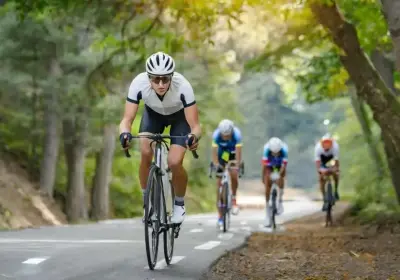






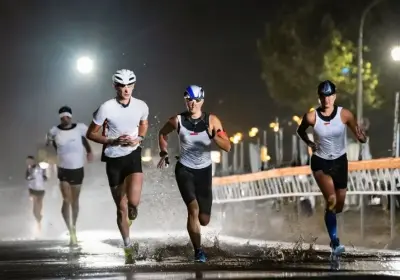






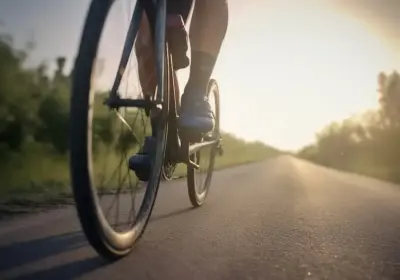


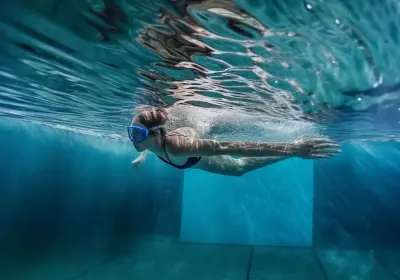
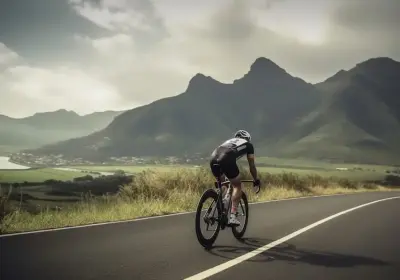
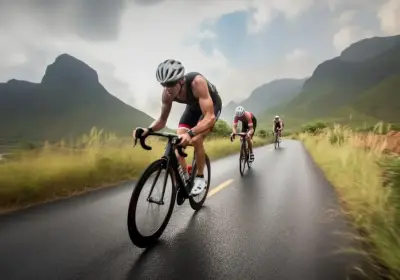




















Leave a comment